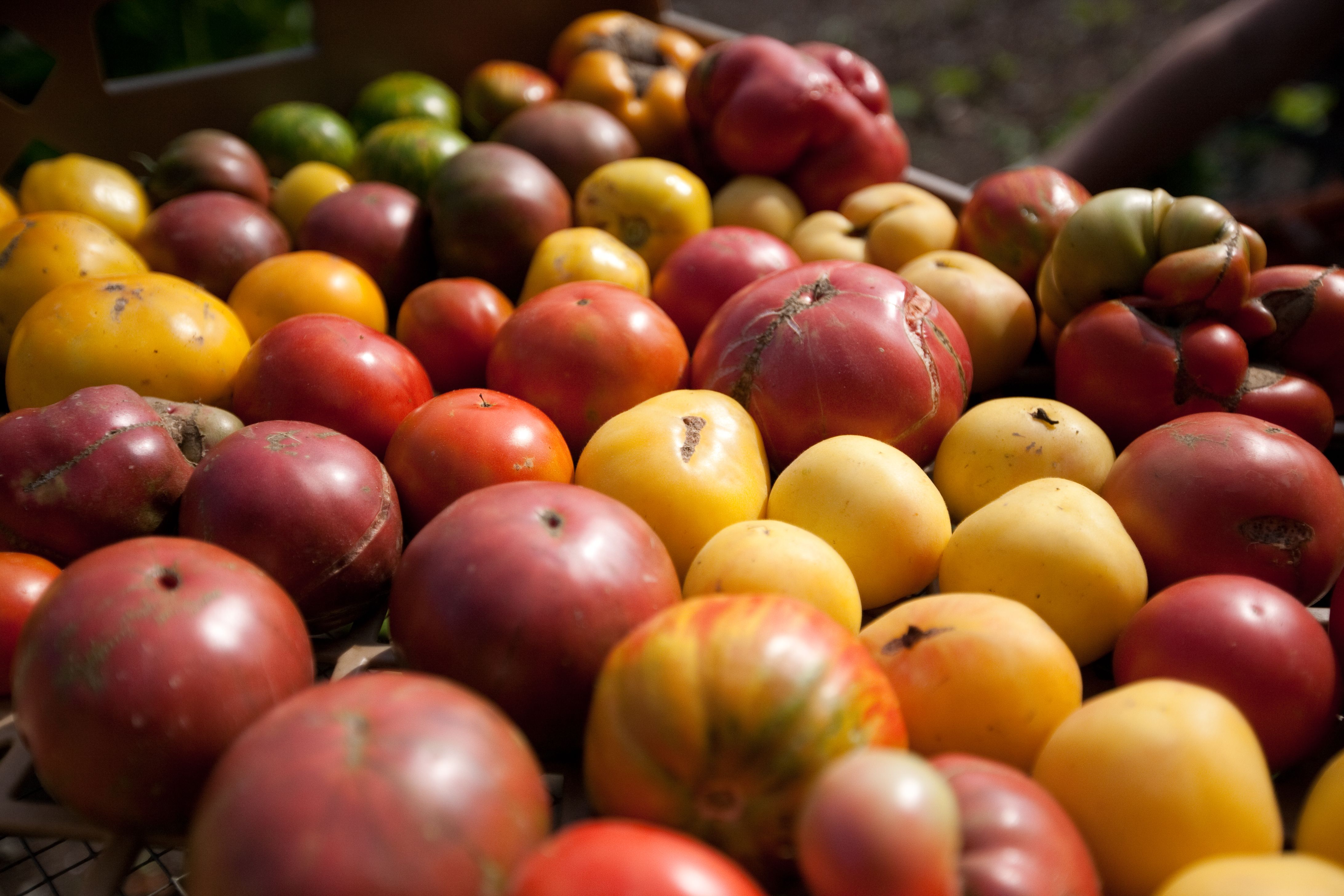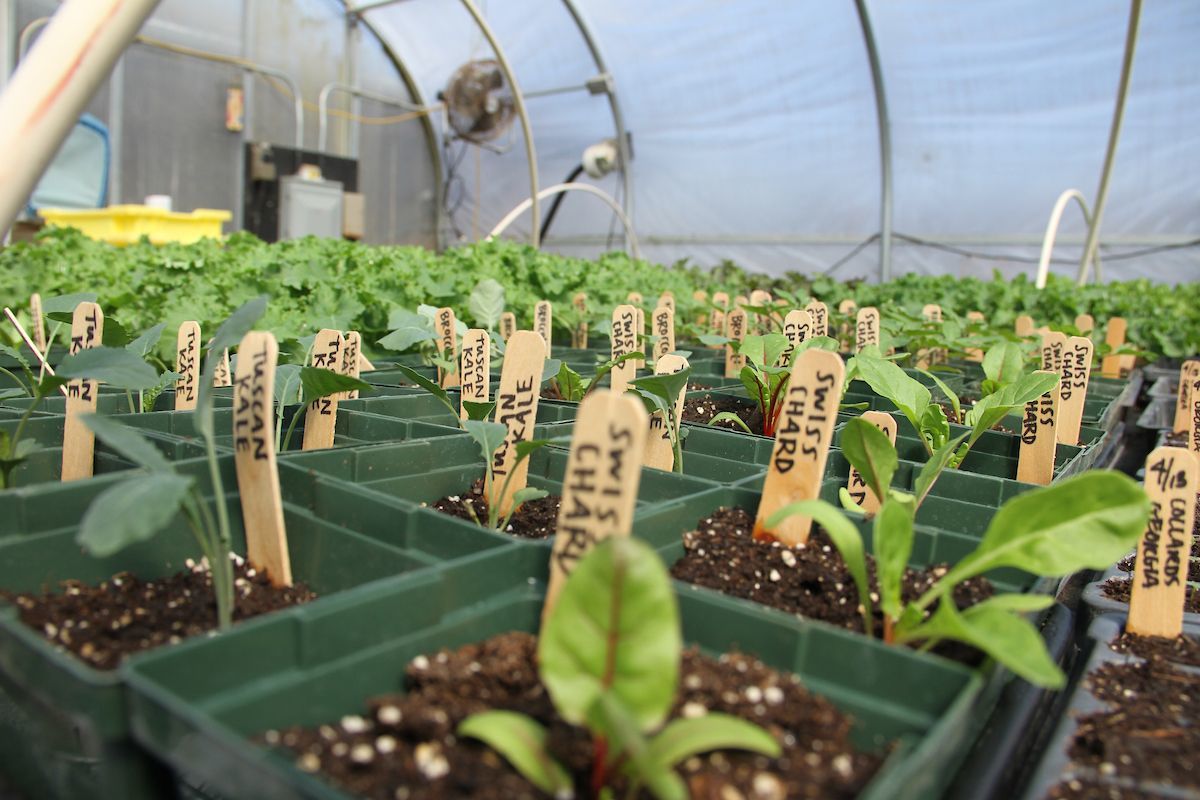
Heirloom tomatoes are a summer time staple and each variety has a unique story as well as flavor. Here are the varieties that we grow at Glynwood.
Black Krim, 80 days to maturity, beefsteak-type tomato. This variety has dark red-purple fruit, a rich, sweet flavor and is very juicy. This heirloom from Russia is well known for its beautiful, large fruit and wonderful flavor.
Cherokee Green, 86 days to maturity. This is a seed selection from the heirloom tomato variety, Cherokee Purple. Considered one of the best green tomatoes, it has medium-size bright green fruits with some yellowish-orange color when the fruit is ripe. Bold, acidic and complex tomato flavor.
Paul Robeson, 80 days, beefsteak-type tomato. This heirloom variety produces large (up to 20 ounce) fruit that are maroon-black shouldered, sweet, very juicy, and have a full-bodied tomato flavor. 'Paul Robeson' is an old Russian variety named after the African-American actor, singer and civil rights activist, Paul Robeson (1898-1976). The variety was originally introduced to American seed savers in the mid-1990’s by Marina Danilenko, a pioneering private seed conservationist from Moscow during the Perestroika-era. She named the variety after Paul Robeson as he became a hero in the Soviet Union because of his activism and the unyielding strong position he took against McCarthyism.
Pruden’s Purple, Early, 70 days to maturity, Brandywine-type tomato. This variety yields flattened, smooth, large fruits (12 to 16 ounce), with dark pink skin and crimson flesh. It has a good tomato flavor that is balanced between sweet and tart. The story of this tomato and how it was selected is attributed to a woman in Eastern Kentucky named “Mrs. Pruden.” Early listings in the Seed Savers Exchange describe fruit that can be very large (over a lb.) with “a deep purple, almost black color.” However, all known offerings of this tomato today are what we now call ‘pink’ in tomato terminology (in the nineteenth century it was referred to as ‘purple’). Pruden’s Purple was only exchanged among seed savers beginning in the mid-1980’s and was introduced into the commercial seed trade in the late 1990’s.
Wapsipinicon Peach, 80 days to maturity. This tomato variety, also known as 'Yellow Peach', is a beautiful, unique and productive variety. Its fruits are two inches in diameter, globe-shaped, with a yellow fuzzy skin. They are juicy, sweet and very mild and low acidity, with a wonderful, tiny bit of tart taste that lingers in your mouth. It is a good variety to eat alone because the flavor and texture don’t need accompaniment or enhancement.
In her book entitled, "The Heirloom Tomato: From Garden to Table: Recipes, Portraits, and History of the World's Most Beautiful Fruit," Amy Goldman credits the origin of peach tomatoes to the plant breeding work of Elbert S. Carman, owner and editor of The Rural New-Yorker magazine. He introduced it in 1890 under the name of 'White Peach'. Seed companies immediately began listing this novel variety under various names and by the early 1900s, the efforts of their breeding work had resulted in several new "peach-type" varieties. 'Wapsipinicon Peach', was named after the Wapsipinicon River in Iowa and originally shared by seed saver, Dennis Schlicht.
Striped German, 78 days to maturity, beefsteak-type tomato. This heirloom tomato variety is one of the most popular bicolored beefsteak tomatoes grown. The fruits are large (12 to 16 ounce, but can be almost 2 pounds) and are slightly ribbed with yellow and red marbling, inside and out. Delicious and beautiful when sliced, Striped German also makes a great canning tomato. The meaty fruits have a complex tropical flavor and an excellent, smooth texture.
Speckled Roman, 85 days to maturity, elongated plum-type tomato. The fruits of this plum tomato average 6 to 8 ounces, with bright red skin and golden streaks. This tomato has excellent flavor and meaty red flesh with very little juice. It. This variety, that’s good for fresh eating as well as cooking quickly into sauce, was developed by seed saver, John Swenson.

